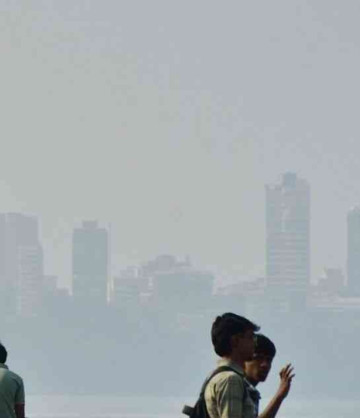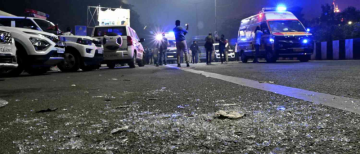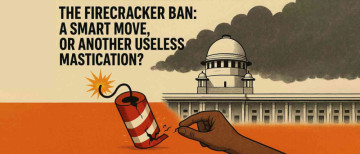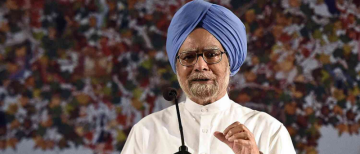In the words of Mahatma Gandhi, “The greatness of a nation and its moral progress can be judged by the way its animals are treated.” Delhi now stands at a crossroads, tasked with proving that greatness can include both safety and kindness.
On August 11, the Supreme Court of India issued a directive that shook Delhi and the surrounding National Capital Region (NCR): within eight weeks, all stray dogs were to be rounded up, sterilised, vaccinated, and housed permanently in dedicated shelters. No dog, the court said, should be released back onto the streets.
The order came after a suo motu hearing sparked by the tragic death of a six-year-old girl from rabies — a case the bench described as “very disturbing and alarming.” Justice J.B. Pardiwala was emphatic: “Infants and young children, at any cost, should not fall prey to rabies.” He warned that any individual or organisation obstructing the relocation of strays would face legal action.
The intention — to protect the public from rabies and dog attacks — is not in dispute. But the method has split public opinion wide open. For some, the ruling offers long-overdue relief from what they see as a daily menace. For others, it is a cruel, impractical move that betrays decades of humane, science-based policy on animal control. The debate is fierce, emotional, and increasingly political.
The Scale of the Problem
Delhi’s last official stray dog census in 2012 put the population at around 60,000. Today, estimates range from 5.6 lakh to over 10 lakh. Packs roam streets, markets, and residential colonies, sometimes peacefully, sometimes aggressively.
India accounts for roughly 36% of global rabies deaths, with dog bites causing 96% of cases. Between January and June this year alone, Delhi reported 35,198 animal bite incidents and 49 rabies cases. Municipal data shows dog bite cases in the capital jumped from 6,691 in 2022 to over 25,000 in 2024.
This is not a small public health issue — and it’s not just strays involved. In Gurugram, most reported bites are from pet dogs, with some high-profile attacks involving large breeds like the Siberian Husky and Pakistani Gul Dong.
The Supreme Court’s New Stance — and the Legal Twist
The August 11 directive is one of the strongest ever in India’s decades-long struggle with its stray dog population. But it appears to contradict existing law. Under the Animal Birth Control (ABC) Rules, 2001 and 2023, community dogs must be sterilised, vaccinated, and returned to their original location. Routine displacement is unlawful.
Earlier Supreme Court rulings, too, had stayed the removal, culling, or dislocation of street dogs. Article 51A(g) of the Constitution even encourages compassion toward all living creatures, including strays.
Animal welfare advocates point out that the ABC Rules exist for a reason: mass removal often fails due to the “vacuum effect” — when dogs removed from an area are replaced by new, unsterilised dogs, leading to more bites and territorial fights.

Supporters: Safety First
Not everyone sees the order as misguided. Some Resident Welfare Associations (RWAs) and families affected by dog attacks welcome it as overdue.
Atul Goyal, president of the United Resident Joint Action (URJA), said, “Dog bite cases have been rising steadily, and this order will provide relief.” Former Union minister Vijay Goel, who has campaigned for a “no dogs on streets” policy, hailed it as a breakthrough. The family of Chhavi Sharma, the six-year-old killed in June, called the ruling “justice born out of unimaginable loss.”
The Delhi government and Municipal Corporation of Delhi (MCD) have pledged phased implementation, starting with aggressive or rabies-infected dogs. Mayor Raja Iqbal Singh said the city’s 20 shelter homes would be expanded, NGOs would be involved, and sterilisation scaled up. Chief Minister Rekha Gupta promised a structured policy to make Delhi “dog-free” in certain areas.
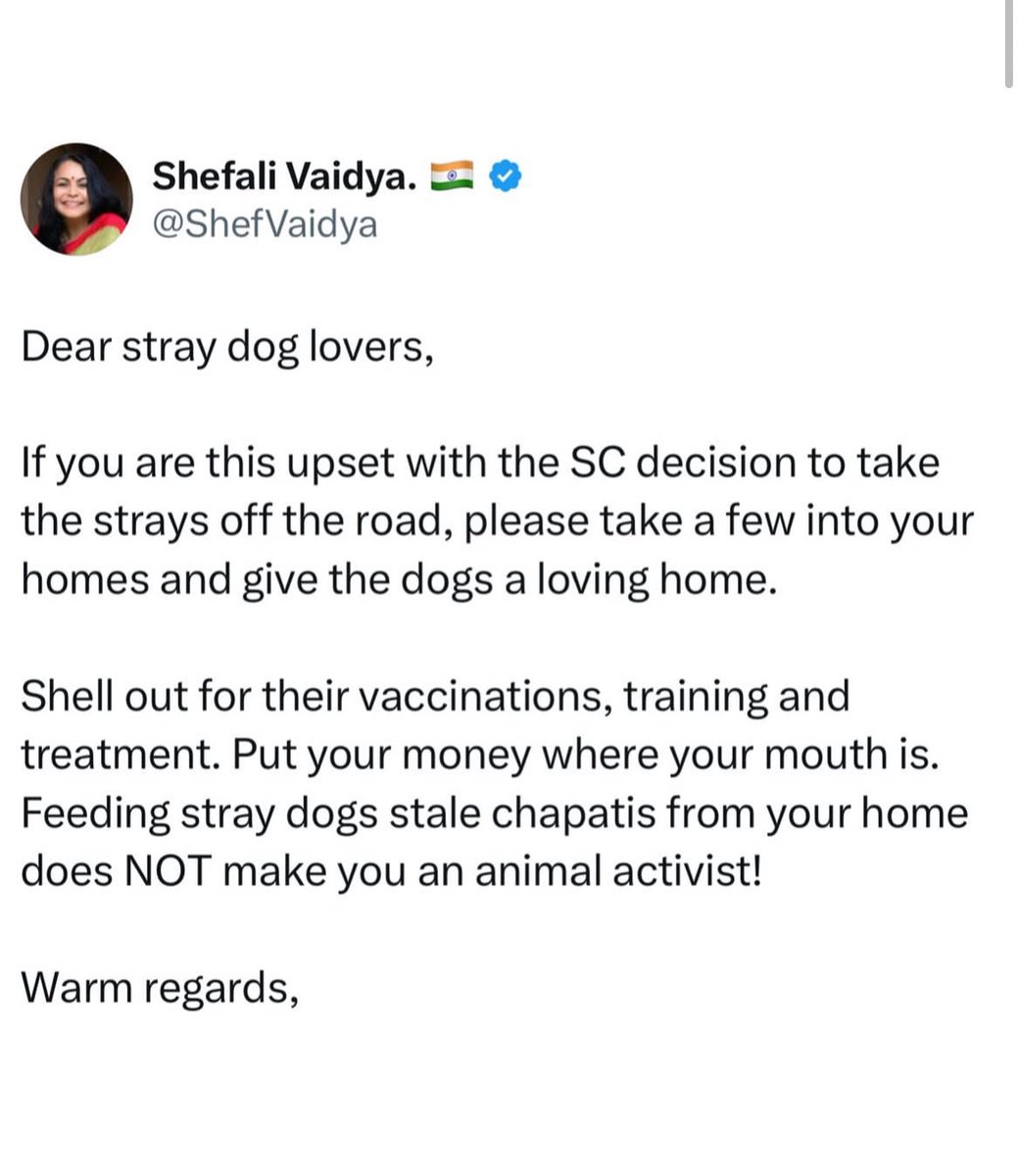
Opponents: Cruel, Impractical, and Potentially Deadly
Animal rights organisations — from PETA India to Friendicoes-SECA — have condemned the ruling as “inhumane,” “impractical,” and “legally untenable.” They argue that Delhi’s current shelter capacity is nowhere near the millions required, and even if new facilities were built, overcrowding, disease, and neglect would be inevitable.
Veterinarian Dr. Yasin Hussain called the plan “ill-thought-out and arbitrary.” Maneka Gandhi estimated the cost of adequate shelters at ₹15,000 crore. Activists warn that dogs in cramped spaces could spread deadly diseases like distemper and parvovirus, and unsterilised dogs in shelters could keep reproducing.
Preeti Khanna, founder of the Street Animal Welfare Society, said forcibly moving old, sick, or malnourished strays would cause immense suffering unless land and infrastructure were prepared first. Lawyer and rescuer Diyam Khera accused the MCD of “systematic failure” in sterilisation efforts, asking, “Why should stray dogs pay the price for government failure?”
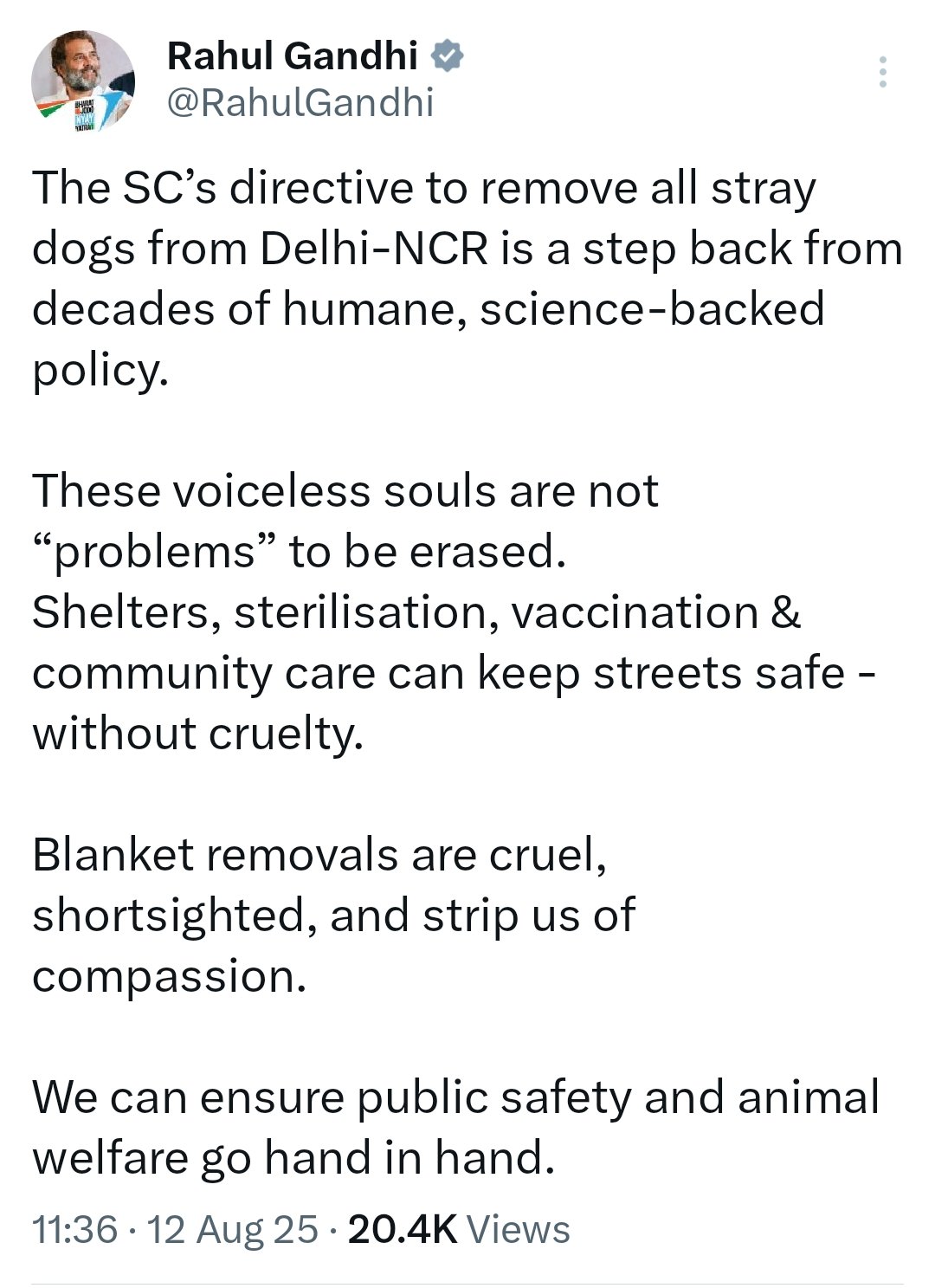
A Surge of Protests and Celebrity Backlash
Within days of the order, protests erupted outside the Supreme Court and at India Gate. Demonstrators — including activists, feeders, and rescuers — were detained by police and charged under public order laws. Many compared the mass removal to a “death sentence” for community dogs.
Bollywood and regional film stars joined the outcry. Janhvi Kapoor posted: “They call it a menace. We call it a heartbeat.” John Abraham, PETA India’s honorary director, wrote to Chief Justice B.R. Gavai urging a review, stressing that community dogs are part of Delhi’s social fabric. Zeenat Aman called for a “science-backed approach,” while Vir Das encouraged Delhiites to adopt street dogs and support NGOs.
Why the Shelter Model May Fail
Even if money and political will existed, building enough shelters to house up to 10 lakh dogs is a near-impossible task.
Shelters are meant to be temporary refuges for recovery or adoption — not lifelong holding pens. In overcrowded conditions, fights break out, diseases spread, and quality of care plummets. Without massive, sustained funding for food, staff, cleaning, and veterinary care, the scenario could quickly turn grim.
Animal welfare history shows that displacement often makes the problem worse. Jaipur, Lucknow, and Sikkim achieved near-zero rabies deaths not by removing dogs, but by running sustained ABC programmes and ensuring vaccination coverage exceeded the WHO’s 70% benchmark.
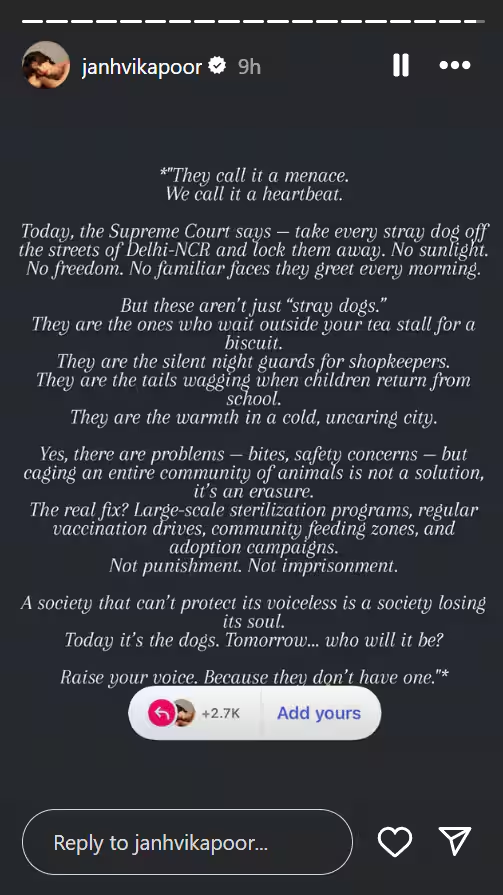
The Right to Live — and the Need for Balance
Critics argue that the ruling strips community dogs of their “right to live” in their home territories, a right recognised in previous court orders. For decades, they have coexisted — sometimes uneasily — with humans, guarding streets, reducing rodent populations, and, in some cases, even protecting residents.
Stories abound: the metro station dog who guides commuters, the street guardian who escorts schoolchildren, the tea stall “watchdog” who warns of trouble. Removing such dogs not only disorients them but also deprives communities of their presence.
Yet public safety cannot be ignored. Rabies is almost always fatal once symptoms appear, and children are particularly vulnerable. The challenge is to protect both humans and animals — without condemning either to needless suffering.
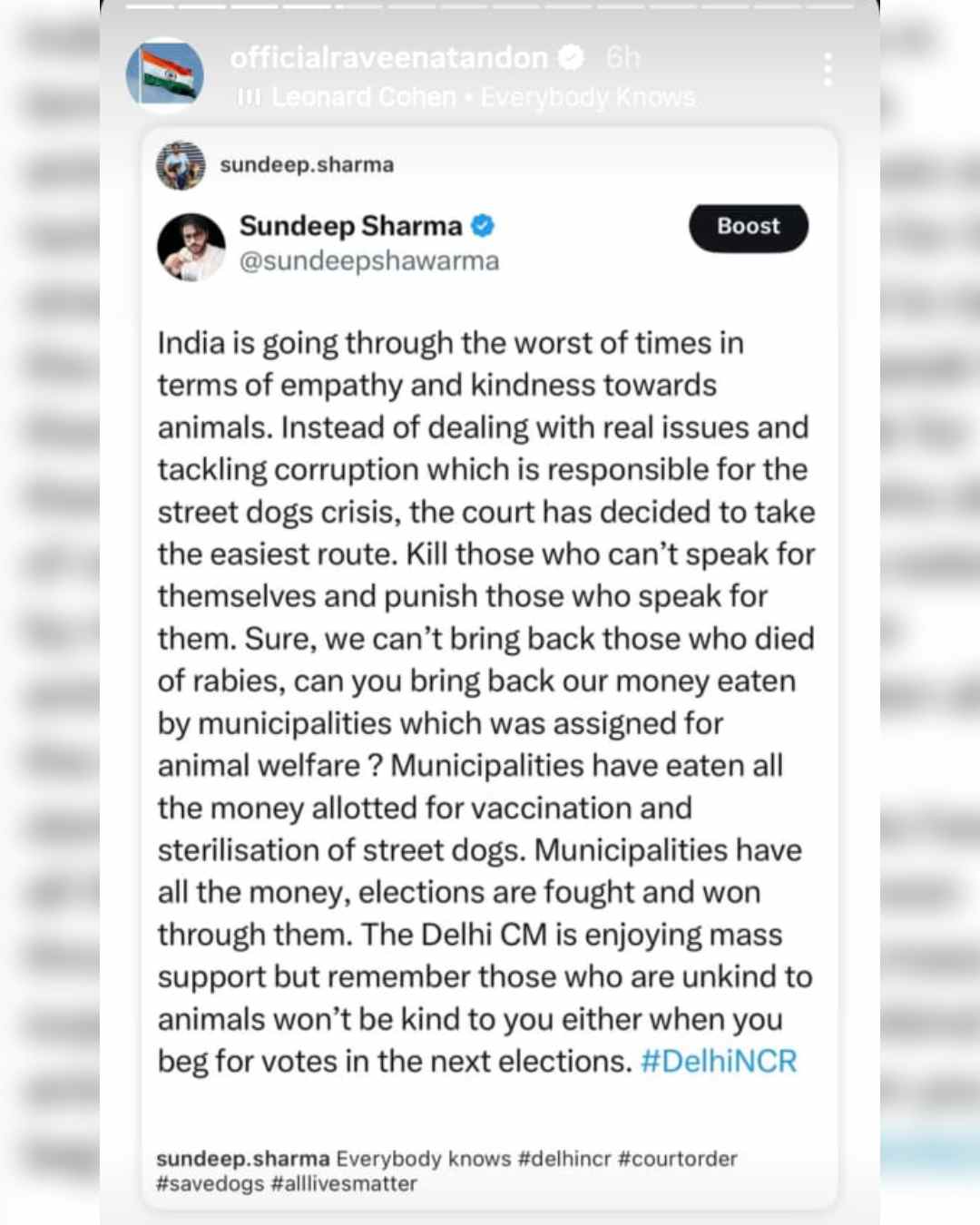
Towards a Middle Path
A purely removal-based strategy risks failure. A purely protectionist stance risks ignoring real dangers. A balanced, middle path is possible — and several experts and activists are already proposing it:
-
Prioritise High-Risk Areas
Instead of blanket removal, target zones with the highest bite incidents or confirmed rabies cases. This allows resources to be concentrated where they’re needed most.
-
Strengthen ABC Programmes
Invest heavily in sterilisation and vaccination, ensuring coverage exceeds 70% in every ward. This is the proven, lawful, and humane way to reduce both population and rabies risk.
-
Improve Shelter Standards
Where shelters are necessary — for aggressive, sick, or quarantined dogs — ensure they are well-resourced, spacious, and disease-controlled. Overcrowding must be avoided.
-
Community Involvement
Feeders, residents, and RWAs should be allies, not adversaries. They can identify unsterilised dogs, monitor health, and defuse tensions between humans and animals.
-
Public Education
Teach children and adults how to behave safely around dogs, report aggressive behaviour, and support sterilisation drives.
-
Close Illegal Breeders and Promote Adoption
Every pet shop or backyard breeder producing unsterilised puppies adds to the problem. Adoption from shelters and the streets should be normalised.
-
Ongoing Review
Monitor bite data, rabies incidence, and shelter capacity regularly, adjusting strategies as needed.
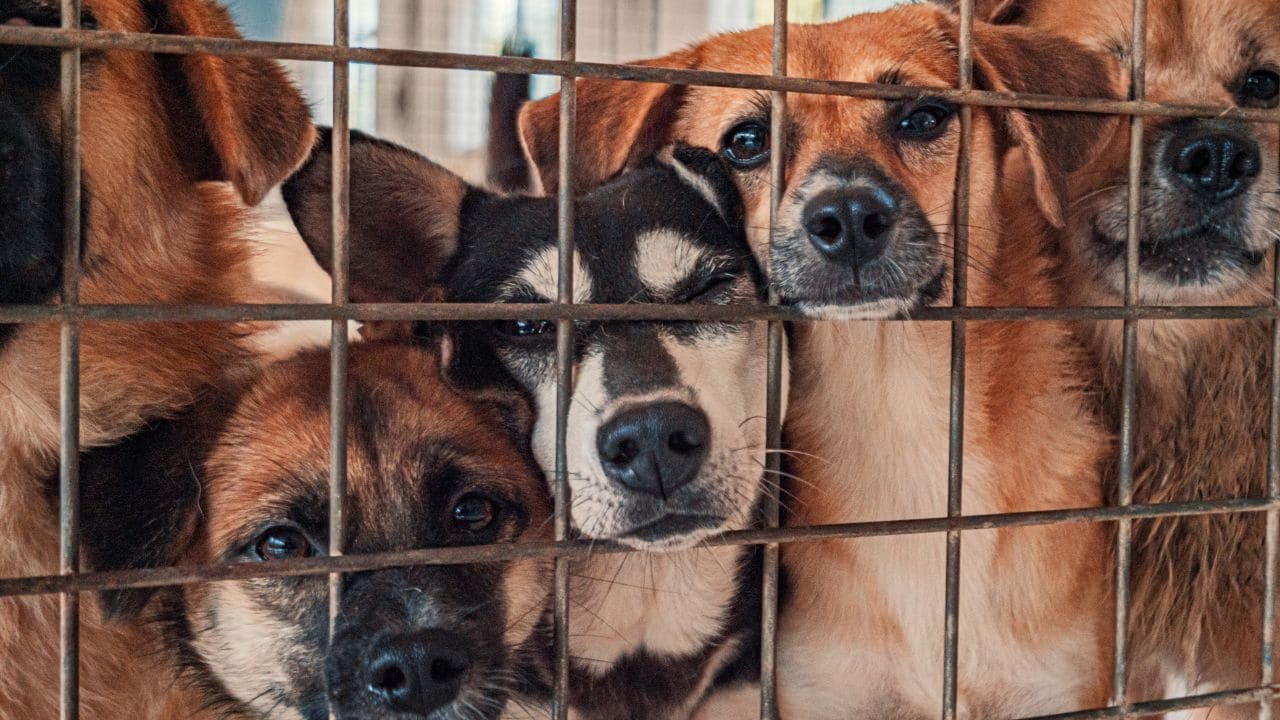
Choosing Coexistence Over Conflict
Delhi’s stray dog crisis is undeniably serious. Rabies kills. Dog bites traumatise. But rushed, large-scale displacement without infrastructure is a recipe for suffering—for animals and, ultimately, for people too.
The choice before us is not between children or dogs. It is between reactionary measures that may backfire and sustainable solutions grounded in law, science, and compassion.
Delhi—and India—can choose the latter. By doing so, we protect both the small child walking to school without fear, and the community dog who has stood guard at her lane for years.
Because in the end, a truly safe city is one where no life—human or animal—has to suffer for the survival of the other.
Views expressed in the above piece are personal and solely those of the author. They do not necessarily reflect Vygr’s views.
With inputs from agencies
Image Source: Multiple agencies
© Copyright 2025. All Rights Reserved. Powered by Vygr Media.





